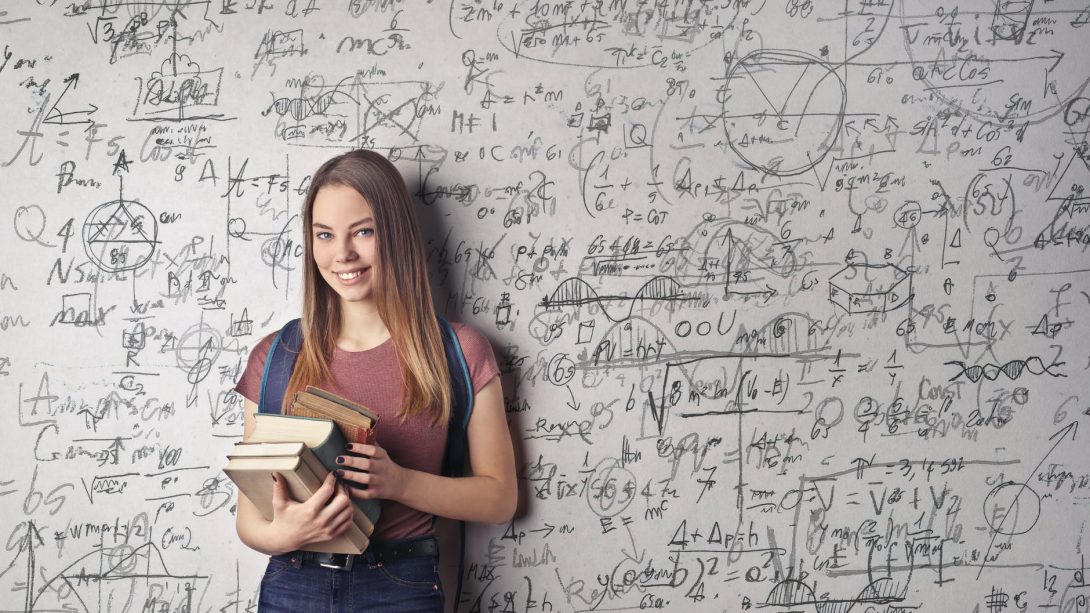This lesson will define independent events, give several scenarios in which they occur, provide the formula for finding the probability of these types of events, and explain how to use the formula.
What Are Independent Events?
When you become an adult, one of the first things that you really enjoy is that feeling of independence. You are able to make your own decisions. Being independent means that the decisions of others no longer have direct rule over you. Independent events in mathematics are similar to this idea.
Independent events do not affect one another’s probability of occurring. For example, if I roll a standard six-sided die and flip a coin, the two events will not have any effect on the probability of the other. Regardless of the outcome of rolling the die, the coin will be just as likely to land on heads or tails. Likewise, regardless of the outcome of the coin flip, the die will be just as likely to land on one of the six numbers of the die.
Here is the formula for finding the probability of independent events A and B.
P(A and B) = P(A) * P(B)
P(A and B) means the probability of A and B both occurring is called a compound event.
P(A) means the probability of A occurring.
P(B) means the probability of B occurring.
A probability can be written in decimal form or in fractional form. If it is written in fractional form, the numerator is the number of successful outcomes, while the denominator is the number of total outcomes.
The formula shows that the probability of each individual event must be determined. Then, the probabilities of the two individual events are multiplied together. This process can actually be used for more than two independent events as well. The examples in this lesson will only discuss two independent events.
Rolling a Die and Flipping a Coin
Let’s go back to the person who is rolling a die and flipping a coin. What is the probability of rolling a number less than 5 and getting tails? We can write this out as:
P(<5 and T), which we know equals P(<5 * PT), then we can plug in the numbers. There are four numbers less than five, so that would go in the numerator of the first part. There are six sides on a die, so that goes on the bottom. So the first part of the equation is 4/6, then for the coin, we know that there is only one possible outcome we’re looking for out of two possible options: heads or tails. So we can write that as 1/2. Now we multiply those numbers together to get 2/6, or 1/3.
This means that if you repeat the compound event three times, rolling the die and flipping the coin, you are likely to get a number less than 5 and tails one of those times. This is not a guarantee. This is referred to as theoretical probability: the mathematically expected outcome. What actually happens, experimental probability, can be different than what you expect.
Drawing Cards from a Standard Deck
Suppose you have a standard deck of playing cards. This means that there are four suits (two black and two red): clubs and spades (black) and hearts and diamonds (red). Each suit has the following cards: Ace, 2, 3, 4, 5, 6, 7, 8, 9, 10, Jack, Queen, King. What would be the probability of drawing two cards and having them both be red with replacement?
Unlock Content
Over 79,000 lessons in all major subjects
Get access risk-free for 30 days,
just create an account.
Try it now
No obligation, cancel anytime.
Want to learn more?
Select a subject to preview related courses:
When you see the phrase with replacement, it means that after you draw the first card from the deck, it is returned to the deck before drawing the second card. This causes the second drawing to be independent of the first drawing. In other words, the deck used in the second drawing is identical to the deck used in the first drawing; thus, the first drawing did not affect the second drawing. You can write out the probability equation like this:
The probability of drawing two red cards is equal to the probability of drawing one red card times the probability of getting another red card. Since there are 26 red cards in the deck and 52 cards total, our probability of drawing a red card is 26/52, which can be simplified to 1/2, or one half. (1/2) * (1/2) = 1/4
This result means that if you had a scenario like this one and it occurred four times, you could expect that one of the times, both cards would be red.
Marbles and Spinners
Now, let’s imagine that you have a bag full of marbles and a spinner. This is another example of independent events. The act of drawing a marble out of a bag will not affect the result on a spinner. What is the probability of drawing a black marble out of a bag with two yellow and three black marbles and spinning a one on a spinner with the numbers one through four?
The probability of getting one black marble is 3/5, and the probability of getting a one on the spinner is 1/4. (3/5) * (1/4) = 3/20.
This means that if the compound event of drawing a marble and spinning this spinner occurred twenty times, you could expect to draw out a black marble and have the spinner land on one on three occasions.
Lesson Summary
Independent events do not affect the probability of one another. The probability of both occurring can be found by finding the product of each individual probability. The formula is written as follows:
P(A and B) = P(A) * P(B)
The result is either a decimal or a fraction in simplest form. Also, the term with replacement indicates that the situation has returned to its initial condition after the first event or any subsequent event has taken place.



